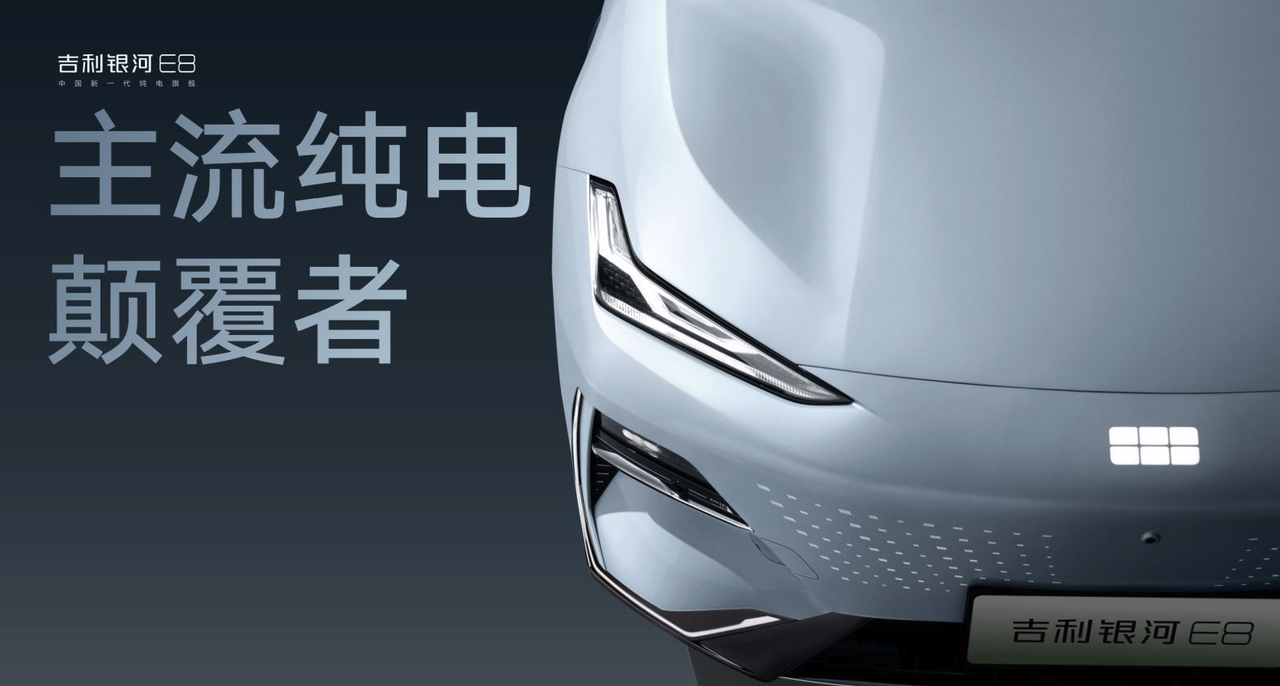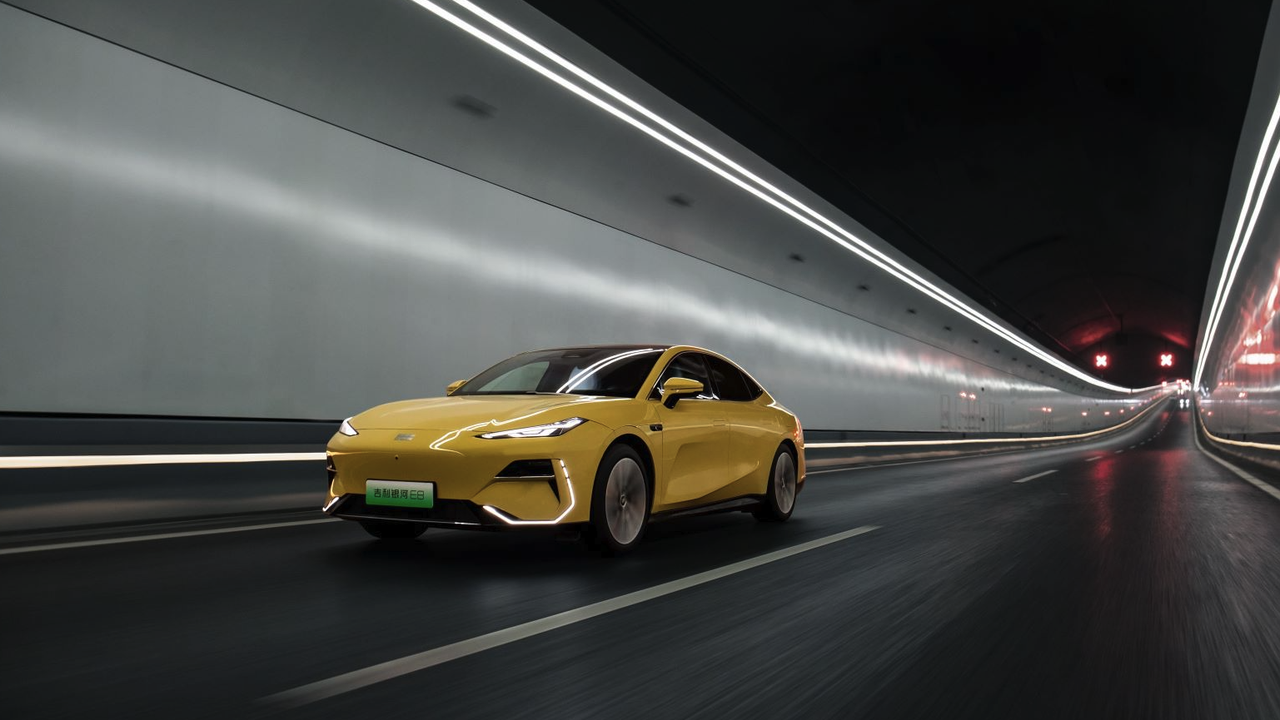As we enter 2024, the competition within the new energy automotive market has reached new heights.
On January 5, the Geely Galaxy E8 officially launched, from its sharp starting price of 175,800 and an all-out configuration scheme, Geely is clearly intent on grabbing market share for vehicles in the 200,000-range, regardless of whether those vehicles use new energy or traditional fuel.
So why does Geely choose to achieve this goal through Galaxy E8? What qualifies Galaxy E8 to fulfill this goal? After the Geely Galaxy E8 launch, Geely senior managers including Geely Auto CEO Gui Jianyu and Geely Auto Senior Vice President Lin Jie shared their thoughts in an exclusive interview.

What follows is the transcript of the interview, edited without changing the original meanings.
How many flagship models do the Chinese market have? Or is Geely Galaxy E8 the only one?
The Galaxy E8 is positioned as a B-class sedan. Within this category, we see the Galaxy E8 as a mainstream flagship model.
Why label it as such?
Before the arrival of new energy vehicles, nearly over 90% of the market shares for B-class sedan were taken by joint and foreign brands. With the development of new energy technology, we believe new energy vehicles will have significant influence within the mainstream B-class market.
Will Galaxy E8 turn the joint-brand fuel vehicle market upside down?
Galaxy E8 is positioned as a next-gen mainstream flagship product. The “next-gen” is reflected in the attributes of electrification, safety, design, performance, and intelligence. Each of these metrics surpasses those of present mainstream electric vehicles.
We aim to replace both traditional fuel vehicles and the previous generation of new energy products.
How would you define the “Galaxy Era”?
The Galaxy Era revolves around the value proposition of developing new energy products. While a vehicle is fundamentally a means of transportation, we see future developments heading towards intelligent mobile terminals. User experience-wise, we’re keen to offer more consumer-grade experiences and value without compromise on safety, speed, and energy conservation.
In our view, the “Galaxy Era” of new energy encapsulates the fundamental principles and elements of car engineering.
How can we make the capital market realize the potential of the “Galaxy Era”?
I think running a business and appealing to the capital market challenges are two sides of a coin. Excellent business performance naturally leads to convincing the capital market.
In early 2021, Geely launched the dual blue action plans, and managed to complete all capital investments in the following two to three years. Not only did we channel investments towards new energy products and intelligent driving, but we also completed our dealer channels. The challenge that follows then would be to execute these plans effectively.
The penetration rate of Geely’s new energy vehicles was only 2.3% in 2020, and increased to merely 6.2% in 2021. However, based on this, we have quickly transformed, reaching 22.9% in 2022. By the fourth quarter of 2023, the penetration rate of our new energy vehicles exceeded 40%.
As long as we remain firmly committed to the group’s grand strategy, we can achieve even better results.
Sales expectations for the GEELY E8?
We aim to be the benchmark in the mainstream market.
Lynk & Co 07, ZEEKR 007, and GEELY E8, how can these three models achieve the result of 1+1+1 > 3?
ZEEKR aims to go premium luxury, to compete with Tesla; GEELY series is for the mainstream, public pure electric models.
Lynk & Co 07 is a plug-in hybrid EMP model defined between A+ to B-. The tone of Lynk & Co is very clear. Users of Lynk & Co come for the trend and the lead. Lynk & Co is more than just a car; in recent years, people have a very strong sense of recognition for Lynk & Co.
How to collect user ideas, and how are they applied to the final design?
Do a lot of research, including user research, media research, etc.
We have a formula inside us, and I will participate in all these designs personally, and continue to participate in subsequent amendments. We must listen to customers’ opinions. Many ideas are proposed by customers, such as the sound system of GEELY E8.
Are there any plans for GEELY E8 to go international?
Before the GEELY E8 went on sale, we held a showcase at the Saudi Auto Show, which gave me great confidence. Whether to go overseas, I think it’s up to the market. As long as the market needs it, we will prepare.
What will the future market landscape look like?
All the things we do are never targeted at others, but only at the users. We can’t always focus on the competitors, as they might make mistakes, or have already left. We need to follow the rules of the car industry and fight a long war. Building cars is a marathon race, and the fastest runner may not last the longest.
It’s not about ZEEKR targeting Tesla, or Geely targeting BYD, but about us targeting the biggest in the market. We don’t aim at anyone in particular.
We have always believed that the automotive industry is a tech industry, and the car is an open product. Now there are new competitors, if they are strong, they will make us even stronger. In the face of strong competition, we can only improve ourselves.
Geely is an open company, and our aim is a bigger market. We only see the users, not the competition.
What role will Geely’s technology ecosystem play in the “Galaxy Era”?
Under the auspices of Smart Geely 2025, we hope to seize the initiative in the second half based on the three-in-one ecosystem. Whether it’s intelligent driving or smart cabin, or even the impactful application of large AI model in the future, we also include the AI digital sprite that is about to be launched soon, a next-generation product that can revolutionize the interaction mode of the smart cabin.
With years of research on the large AI model and the support of the powerful computing power of the Xingrui Computing Center, Geely will bring a new trend to this industry.
What opportunities has Geely seized in terms of the ecosystem?
The three-in-one system of Geely is to create an intelligent tech ecosystem, intelligent manufacturing system, as well as an intelligent energy system and service system.
The Intelligent Technology Ecosystem Network operates from within the ecosystem, such as the layout from chips, operating systems to basic computing power, such as Xingrui Intelligence Center is 81 exaFLOPS, now it has been iterated to 102 exaFLOPS. The iteration speed is quite rapid. But customers can’t see such infrastructure, but customers can feel the experience of the product, as well as the speed and efficiency of product iteration has improved.
Our simulation capability is 50% faster than competitors, equating to over 12 additional months over a four-year period, ensuring exceptional safeguarding of our vehicle’s safety and reliability.
Geely’s ecosystem, including Lynk & Co 08, is highly recognized, giving us an early lead.
What is Geely’s battery strategy?
Geely has its self-developed batteries and also seeks external products based on the ecosystem. Based on the integrated technology of Shield Vehicle Safety, Geely is building an open ecosystem based on battery cells.
We hope that through the Shield safety system, we can attract better industry products to empower GEELY E8, not limited to focusing externally or internally.
Regarding battery configuration, we will satisfy the users’ needs under appropriate circumstances. We will offer products based on market demand, at different stages, we have different strategies.
How do you see the industry trend of starting with high-end configurations?
This trend brings excellent consumer experience. For GEELY E8, it is positioned as a flagship product, thus the investments must be substantial.
Our consumers no longer judge a product only by price but also its value and whether it meets their requirements. GEELY E8 is a worthy replacement for fuel-powered B-class cars; we need such sincerity to attract our users.
We also want our customers to avoid making too many difficult choices. For example, during the co-creation process of 400/800 V users, we found a 50% to 50% preference. In this case, both 400 V and 800 V versions are launched for GEELY E8.
Not everyone needs intelligent driving, as basic AEB suffices for many people. That is why we made this version strategy for GEELY E8. We will always pay attention to user needs and will adjust accordingly.
How do you view the competition in 2024?
Reflecting on 2023, it’s all about ‘rolling’, either in terms of price or marketing. However, I believe more effort should be focused on the creation of product advancement.
In defining GEELY products, we decided to make high-value products, rolling safety, technology, after-sales service, and intelligently, while keeping the price advantage.
How do we maintain our price advantage? It depends on the overall enterprise management system, as well as the technological capacity of the enterprise. Competitions between enterprises are essentially competitions between products, and behind that, it’s all about the battle of costs, which ultimately reflects the competition in technological capabilities.
Users’ demands are explicit and implicit. Explicit needs rely on configuration, while implicit ones refer to the fundamental safety requirements of the product. The key logic behind Geely’s drive to establish a global technology system is to satisfy these intertwined needs and to ensure customer satisfaction.
How is the competition between plug-in hybrids and pure electric vehicles viewed?
Some people prefer pure electric models, while others favour plug-in hybrids. In the new energy race, both will coexist in the long run.
From our current data, the development of plug-in hybrids and pure electric vehicles matches our prediction from three years ago. Plug-in hybrids are growing more rapidly, while the growth of pure electric vehicles is relatively slow. However, this is due to the fast growth rate of pure electric vehicles in the previous years, which resulted in a larger base figure, but the aggregate amount is still in place.
Looking at the interview content, there has been a subtle shift in Geely’s mindset towards car manufacturing. In the past, Geely focused heavily on implicit needs such as safety and handling control. Now, Geely is starting to emphasise explicit needs, providing visible values for consumers.
This is fully demonstrated in the GEELY E8. Examples include the 45-inch 8K extra-large central control screen, brand new exterior design, smart driving, and 800V, among others.
In fact, the launch of the GEELY E8 involved almost all of Geely’s resources. For Geely, the market release of the GEELY E8 is a critical battle that allows no failure.
This article is a translation by AI of a Chinese report from 42HOW. If you have any questions about it, please email bd@42how.com.
